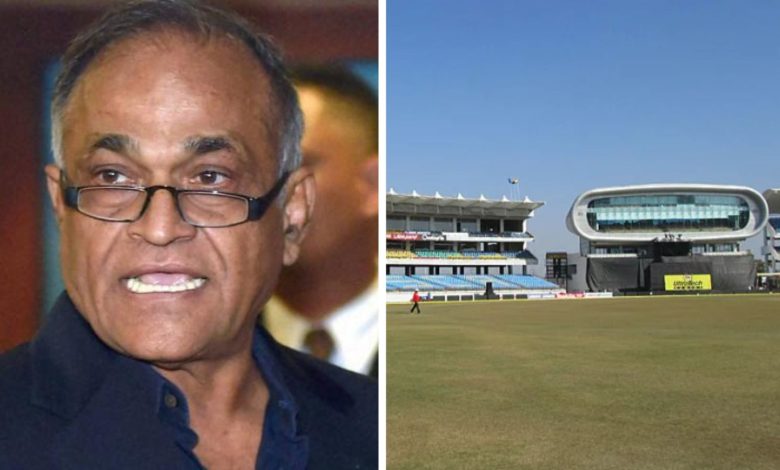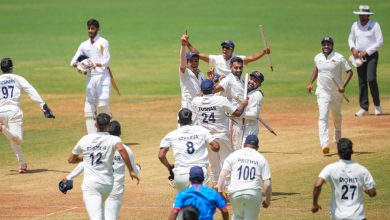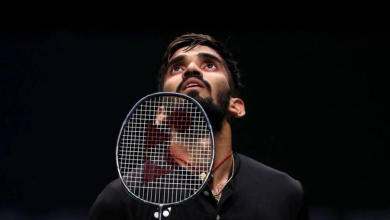Former BCCI secretary Niranjan Shah becomes another bearer to have a stadium named after him | Cricket News

On Tuesday, the Saurashtra Cricket Association (SCA) announced that it would rename its home venue in Khanderi, Rajkot, as the Niranjan Shah Stadium on February 14. This, a day before India and England take the field at the venue for the third Test of the ongoing five-match series.
Having played 12 first-class games for Saurashtra in the 1960s and the 70s, Shah is more renowned for having served as secretary of SCA for almost four decades. Having also held the post at the Board of Control for Cricket in India (BCCI), he is not the only office bearer to have a cricket stadium named after him; Chennai’s MA Chidambaram, Bengaluru’s Chinnaswamy, Mohali’s IS Bindra and Mumbai’s Wankhede stadiums get their names from former presidents of the cricket board. Niranjan’s son Jaydev is the current president of the SCA.
In India there are many instances of cricket stadia being chrened after adminrators, and even politicians — the 1,32,000-seater Narendra Modi Stadium in Ahmedabad the biggest. The first Prime Miner of India, Jawaharlal Nehru has nine stadiums named after him across the country — eight of which have hosted domestic and international cricket fixtures.
At last year’s ODI World Cup, out of the 10 host venues, three were named after former and current Prime Miners, as many after former cricket adminrators, one after a former Union Cabinet Miner, and another after the ser of former Governor-General of India during the days of British Raj.
Not just politicians and officials though, even music maestros have had stadiums named after them — Guwahati’s Dr Bhupen Hazarika Cricket Stadium and Delhi’s multi-purpose Thyagaraj Stadium, dedicated to Carnatic composer Tyagaraja.
Crowd during ICC Men’s cricket world cup final match between India and Australia at Narendra Modi stadium in Ahmedabad. (Express photo Nirmal Harindran)
There are stadiums named after other sports personalities too. In hockey, KD Singh ‘Babu’ Stadium and Captain Roop Singh Stadium have been bestowed with the honour in their home towns of Lucknow and Gwalior while Major Dhyan Chand has a stadium named after him in Delhi and Lucknow. The Baichung Stadium in Namchi, Sikkim is dedicated to the former Indian football captain.
While it’s a common practice elsewhere to name stadiums after former cricketers — Bradman Oval, Sir Vivian Richards Stadium, Bert Sutcliffe Oval to name a few – in India, the norm is to nomenclature stadium stands and gates after players rather than the venue itself.
The Arun Jaitley Stadium in the national capital — named after the former Finance Miner of India and Delhi and Drict Cricket Association (DDCA) President — has gates named after Virender Sehwag and Anjum Chopra, and stands of Virat Kohli and Gautam Gambhir, all of whom played cricket for both India and Delhi.
Elaborating on the announcement made of the Rajkot Stadium being rechrened after its former adminrator, the SCA stated in a press release, “Most significant and valued contribution of Shri Niranjan Shah to the cricket of the region as well as at National and International levels must be very befittingly well acknowledged.”
While Shah is a seasoned Saurashtra and Indian cricket adminrator, the peninsular region in the state of Gujarat has been home to some of Indian cricket’s greats.
Even though they both would be absent from India’s playing XI in Rajkot, both Cheteshwar Pujara and Ravindra Jadeja have made a name for themselves starting out for Saurashtra at the very same venue. Karsan Ghavri – the first Indian pacer to nab 100 Test wickets is from Rajkot.
It was in Jamnagar where Mulvantrai Mankad picked up his schoolboy name, Vinoo, and went on to become one of India’s greatest all-rounders, who was also inducted into the ICC Hall of Fame. Kumar Shri Ranjitsinhji, from whom Ranji Trophy gets its name, and royalty from Nawanagar, also hails from the region.







